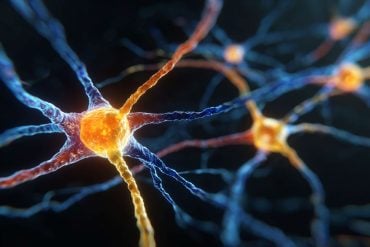Summary: New brain imaging research shows that structural damage in schizophrenia spectrum disorders may begin in specific “epicenter” regions before spreading across connected brain networks. Individuals with the condition showed widespread reductions in structural similarity between key cognitive and emotional brain regions.
These disruptions were strongest in patients with more severe symptoms and poorer cognitive functioning, suggesting a close link between brain disconnection and clinical outcome. The findings support the idea that schizophrenia involves progressive network-level brain changes rather than isolated regional damage.
Key Facts
- Early Damage Sites: Structural abnormalities appear to originate in higher-order association areas of the temporal, cingulate, and insular lobes.
- Network Disconnection: Reduced structural similarity between brain regions reflects widespread morphological disconnection.
- Neurobiological Signature: Affected regions show high astrocyte density, altered dopamine and serotonin signaling, and reduced metabolic activity.
Source: University of Seville
Researchers at the University of Seville have identified the possible origins of structural damage in the brains of patients with schizophrenia spectrum disorders (SSDs). These are regions that show the greatest morphological alterations in the early stages of the disease compared to neurotypical people of the same sex and age.
The study also also found that people with SSD have significant reductions in structural similarity between different regions of the temporal, cingulate and insular lobes.

A growing number of studies support the hypothesis that psychiatric conditions initially emerge as structural alterations in specific brain regions and subsequently spread to other areas through brain connectivity. SSDs are characterised by atypical brain maturation, such as reduced volume, area and thickness of the cerebral cortex.
These alterations, associated with cognitive deficits and severe symptoms, follow a pattern that reflects disconnection within specific brain networks.
The structural similarity between different cortical regions can be estimated using networks based on Morphometric Inverse Divergence (MIND), a methodology that uses characteristics derived from structural magnetic resonance imaging (MRI), such as volume, surface area and cortical thickness.
These networks quantify the degree of morphological similarity between different pairs of regions, where decreased MIND values indicate less structural similarity, which can be interpreted as greater morphological disconnection between the pairs.
Applying this recent methodology, MIND networks were constructed for 195 healthy controls and 352 individuals with SSD. Compared to healthy patients, these latter group showed significant reductions in structural similarity, mainly in the temporal, cingulate and insular lobes.
These decreases were more pronounced in individuals with a poorer clinical status, defined by greater cognitive impairment and more severe symptoms. The alterations were mainly located in higher-order association areas, which mature later and are fundamental for complex cognitive functions.
The study also identified the possible origins, or epicentres, of structural damage, defined as regions showing the greatest morphological alterations in the early stage of the disease compared to the expected values for neurotypical individuals of the same sex and age.
Finally, 46 neurobiological characteristics were related to the MIND networks, revealing that regions with lower similarity in individuals with SSD have a high presence of astrocytes and neurotransmitters, such as dopamine and serotonin, as well as reduced metabolism and cortical microstructure.
These findings provide evidence of the complex interaction between structural similarity, maturation processes and underlying neurobiology in determining the clinical status of individuals with SSD. This approach could contribute to the development of structural biomarkers and personalised therapeutic strategies based on each patient’s biological and clinical profile.
Key Questions Answered:
A: Damage appears to originate in specific regions of the temporal, cingulate, and insular lobes before spreading through connected networks.
A: Researchers used advanced MRI-based structural similarity mapping to measure how closely different brain regions resemble one another.
A: Greater structural disconnection is linked to worse cognitive impairment and more severe symptoms.
Editorial Notes:
- This article was edited by a Neuroscience News editor.
- Journal paper reviewed in full.
- Additional context added by our staff.
About this schizophrenia research news
Author: María García Gordillo
Source: University of Seville
Contact: María García Gordillo – University of Seville
Image: The image is credited to Neuroscience News
Original Research: Open access.
“Reduced brain structural similarity is associated with maturation, neurobiological features, and clinical status in schizophrenia” by Natalia García-San-Martín et al. Nature Communications
Abstract
Reduced brain structural similarity is associated with maturation, neurobiological features, and clinical status in schizophrenia
Schizophrenia spectrum disorders (SSD) are characterized by atypical brain maturation, including alterations in structural similarity between regions.
Using structural MRI data from 195 healthy controls (HC) and 352 individuals with SSD, we construct individual Morphometric INverse Divergence (MIND) networks.
Compared to HC, individuals with SSD mainly exhibit reduced structural similarity in the temporal, cingulate, and insular lobes, being more pronounced in individuals exhibiting a ‘poor’ clinical status (more impaired cognitive functioning and more severe symptomatology).
These alterations are associated with cortical hierarchy and maturational events, locating MIND reductions in higher-order association areas that mature later.
Finally, we map 46 neurobiological features onto MIND networks, revealing a high presence of neurotransmitters and astrocytes, along with decreased metabolism and microstructure, in regions with reduced similarity in SSD.
These findings provide evidence on the complex interplay between structural similarity, maturational events, and the underlying neurobiology in determining clinical status of individuals with SSD.






